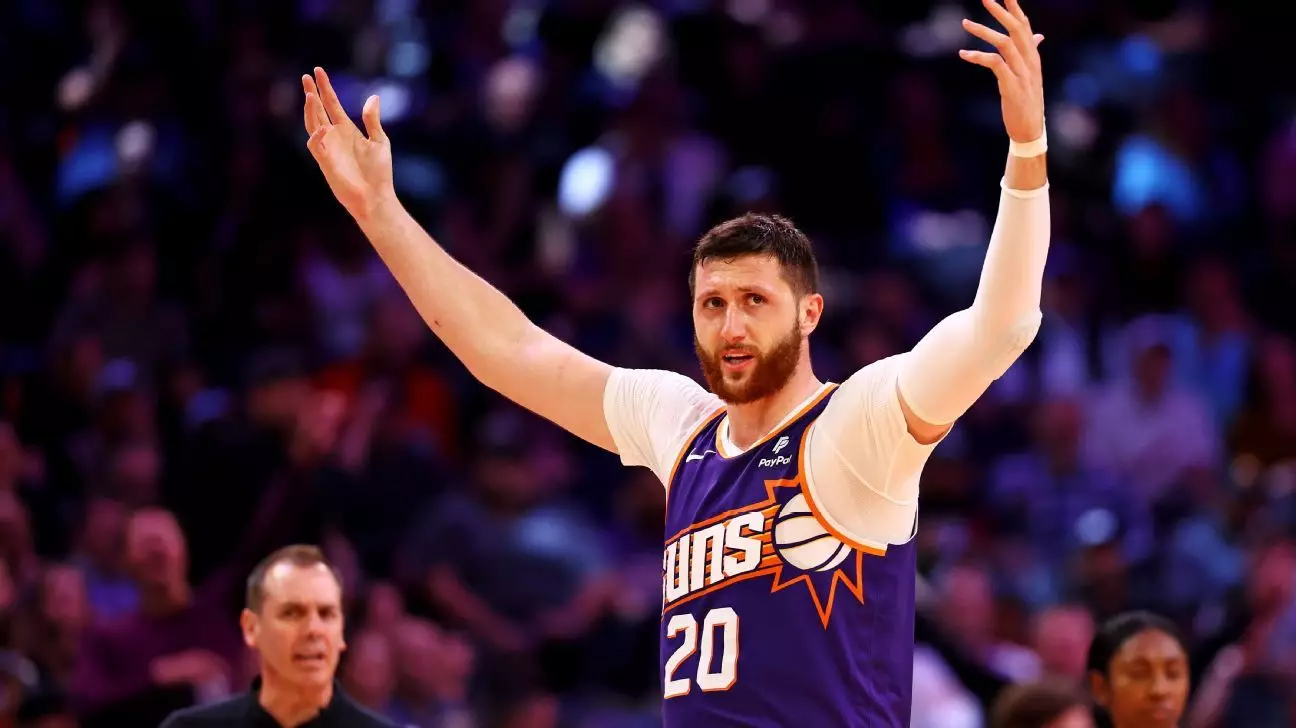In the high-pressure world of the NBA, interpersonal relationships often dictate a player’s success and satisfaction with their team. For center Jusuf Nurkic, his recent comments about the Phoenix Suns indicate a growing chasm between him and head coach Mike Budenholzer. Nurkic has publicly stated that there has been no communication between him and Budenholzer for two months, highlighting a lack of connection that may be contributing to his current discontent. This candid admission raises significant questions regarding team dynamics and the psychological state of professional athletes who feel sidelined and unsupported.
Nurkic opened the season with promise, starting 23 games and contributing an average of 8.6 points and 9.2 rebounds per game. However, after being benched, he has not played since January 7. His transition from starting center to a spectator position has not only impacted his performance metrics but has also led to an emotional toll. During the pivotal January 9 game against the Atlanta Hawks, Nurkic expressed frustration about not being informed of his inactive status, a move indicative of deeper organizational disconnects.
The evolution of Nurkic’s role became particularly pronounced when he was replaced by Mason Plumlee in the starting lineup during the team’s match against the Philadelphia 76ers. The shift marked a significant change, not only in tactical gameplay but also in Nurkic’s professional identity. This was his first time coming off the bench since his early years with the Denver Nuggets, shedding light on how disruptive this change has been for him personally.
While Nurkic’s stance is clear, Budenholzer’s response addresses the complexities of team dynamics. He acknowledged Nurkic’s grievances, indicating that the decision to explore other player rotations was based on earning minutes and performance efficacy. Budenholzer’s strategy has involved utilizing multiple centers, such as Nick Richards and rookie Oso Ighodaro, aiming for optimal performance in a competitive league where positions are closely contested. Such decisions illustrate the harsh realities of professional sports: talent alone does not guarantee playtime; rather, consistent performance and adaptability are required.
In acknowledging Nurkic’s frustrations, Budenholzer clarified that there has been communication about the situation. However, the contrasting narratives from both the coach and the player indicate a potential breakdown in effective dialogue and mutual understanding, further complicating their relationship.
Despite the emotional strain, Nurkic has displayed a commendable sense of professionalism. He remarked on the need to stay prepared and support his team regardless of personal setbacks, highlighting resilience in the face of adversity. Even though he referred to his current circumstances as “chaos,” his determination to remain a valuable team player reflects a commitment that goes beyond individual accolades.
Moreover, Nurkic’s perspective on the Suns’ other centers is noteworthy. His ability to acknowledge their contributions and embrace the team’s need for effective rotations suggests a level of maturity that may help in fostering a healthier team environment moving forward. By stating, “I’m glad they found someone who they want to play,” Nurkic’s comments reflect a potential for collaboration, though his own grievances remain an undercurrent that cannot be ignored.
As the February 6 trade deadline approaches, Nurkic is preparing for the possibility of change. His outlook remains pragmatic; he understands that in a league as volatile as the NBA, players can be traded unexpectedly. “One door closes, another will open eventually,” he stated, encapsulating the mindset required for athletes in his position. Whether he stays with the Suns or moves on, Nurkic’s focus on maintaining a strong work ethic is an affirmation of his professional integrity.
Jusuf Nurkic’s current scenario with the Phoenix Suns exemplifies the complexities of professional basketball interactions and the challenges athletes face when communication falters. As he grapples with his shifting role, the responses from both him and Budenholzer underscore the vital need for strong, open communication within teams to foster a collaborative spirit necessary for both individual and collective success. The future remains uncertain, yet Nurkic’s resolve indicates that he is ready to confront whatever lies ahead.


Leave a Reply